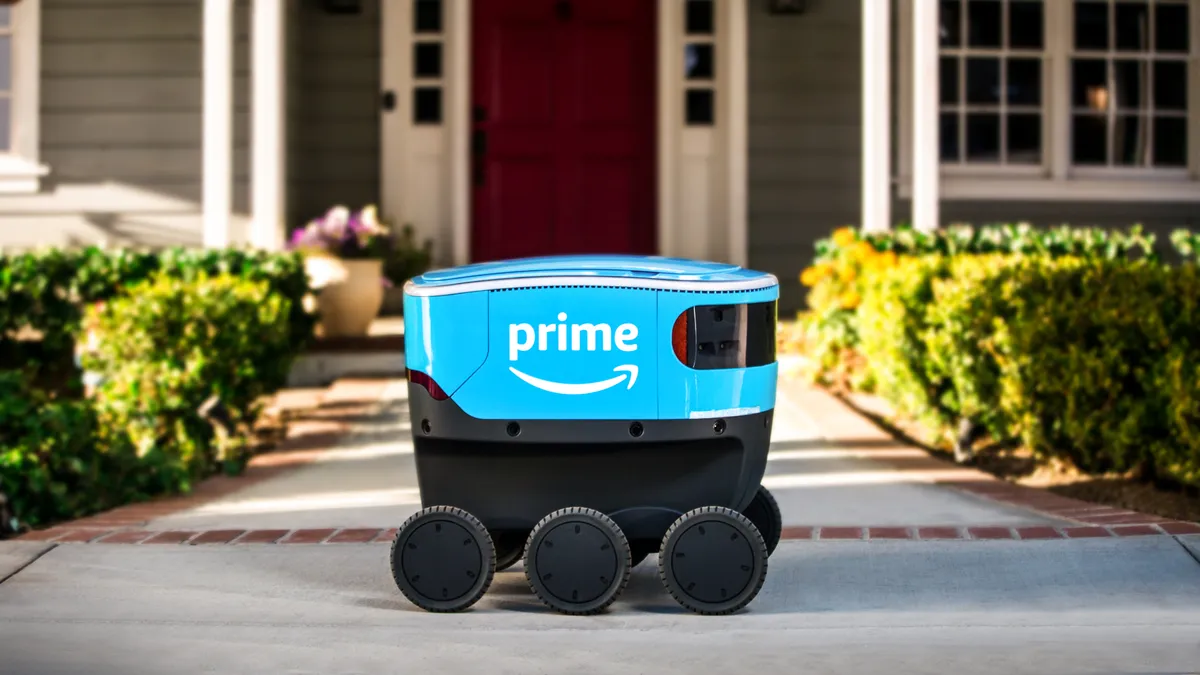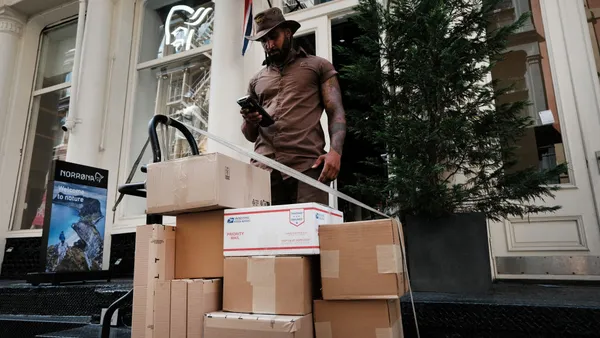UPDATE: Aug. 7, 2019: Scout will begin to deliver Amazon packages to customers in Southern California, Amazon said in a blog post. The deliveries will start "with a small number of Amazon Scout devices" on weekdays during daylight hours. A human "Scout Ambassador" will initially accompany the autonomous delivery bots.
Dive Brief:
-
Amazon announced it is testing a new delivery robot — or what the company in a blog post describes as a "fully-electric delivery system" — called "Amazon Scout" in a neighborhood in Snohomish County, Washington, just north of Seattle.
-
The company said six Amazon Scout devices have begun delivering packages during daylight hours on weekdays to consumers who have placed orders with Amazon. While the Scout devices autonomously follow a specified delivery route, they initially are being accompanied by Amazon employees, according to the blog post.
-
The six-wheeled Scout robot, about the size of a small cooler that moves along at the pace of a typical pedestrian, was developed at Amazon's research and development lab in Seattle, the company said.
Dive Insight:
The Amazon Scout trial shows the e-commerce giant continuing to explore options to improve its last-mile delivery capabilities.
Amazon announced plans last year to order thousands of vans and hire seasonal delivery drivers to help bring the last mile of its supply chain in-house, decreasing its reliance on carriers like UPS, FedEx and USPS.
The e-commerce giant has also explored operations of delivery drones, although that ambition appeared to be in a holding pattern in recent years amid regulatory delays.
Despite these hiccups, Amazon is finding ways to adopt automation and robotics into its supply chain, investing and piloting technology in all forms.
Testing for Scout is limited for now, focusing on a single neighborhood in a single market. "We ... look forward to taking the learnings from this first neighborhood so Amazon Scout can, over time, provide even more sustainability and convenience to customer deliveries," the company said.
Amazon has received some flack for lack of visibility into its carbon footprint, especially when it ordered 20,000 vans for deliveries, none of which were electric.
Testing and deploying an electric delivery system may help to advance Amazon's sustainability initiatives in the last mile.














